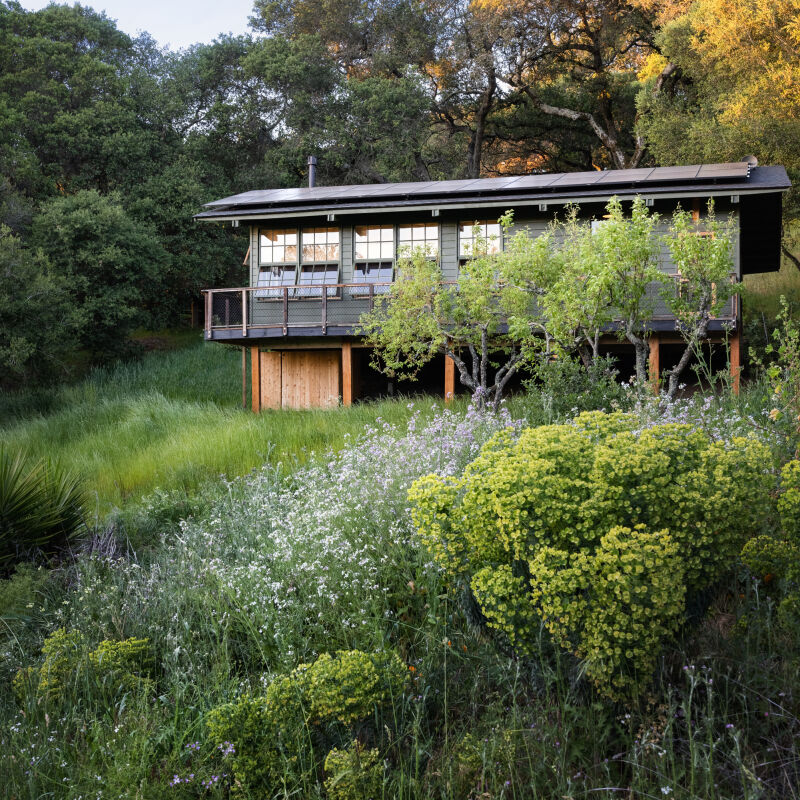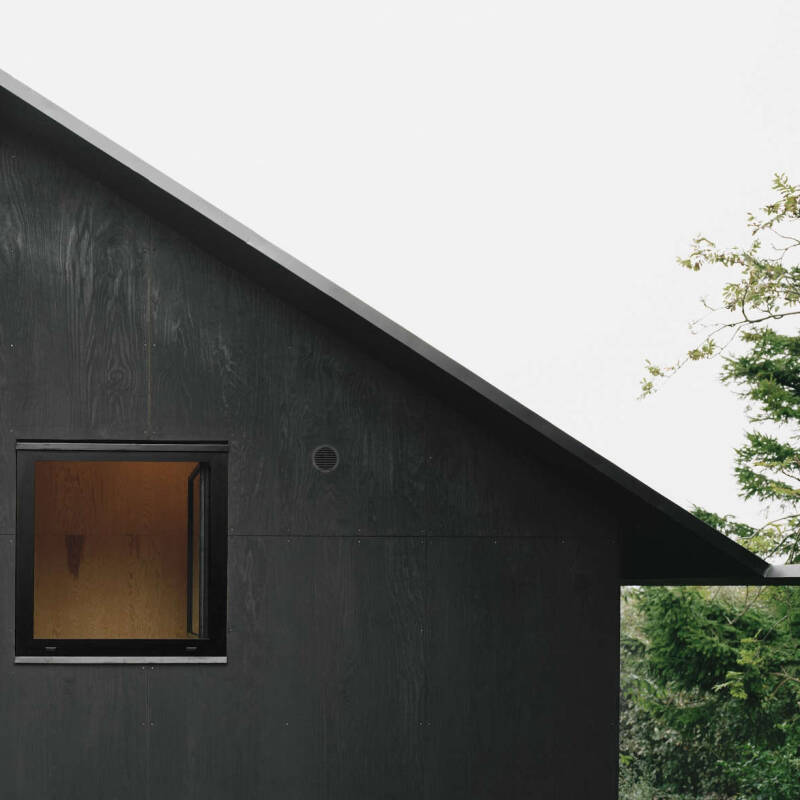Recently an architect friend of Julie’s was telling her that his dark and dramatic ebonized floors showed every speck of dust and strand of pet hair—not exactly the look he was going for. That had us thinking: Hardwood floors are a big investment, and there are so many places where the style or the finish can go completely wrong—but by the time you’ve installed it and lived with it enough to see its flaws, it’s too late. To help understand some of the choices available, we recently took a look at the protective finishes that are available (and what they’ll do to your floors); see Remodeling 101: What to Know About the Four Most Popular Wood Floor Finishes.) Today we’re taking a look at a few popular styles of wood flooring, from bleached to reclaimed to the newest matte trend.
To learn more, we consulted Craig Margolies, co-owner of New York City–based firm The Hudson Company. Before we got started, Margolies pointed out that while installing a new floor is one way to remodel, refinishing an existing floor is almost always a good option. “You can do more than you’d think to an older wood floor,” he says. “Even when the floor is in poor condition, as long as it hasn’t been re-sanded more than, say, five times, you should be able to refinish it and get the look you want.” Keep that in mind.
With Margolies’s insights, here’s a look at the only six wood floor styles you need to know, and how they hold up.
1. Scandinavian-Style Floors

Be aware that the terms “bleached” and “Scandinavian-style” are often used interchangeably, says Margolies, though they’re not necessarily the same. “The Scandinavian-style floor has become associated with a wider plank and a whiter finish that still has a strong natural feel. Its matte finish is typically achieved by using an oil or oil wax. Bleaching is a good way to achieve that style, but you can also use a combination of white stains and pigments” for a Scandi look, he clarifies. According to Margolies, a Scandi-style floor isn’t bright white, nor is it so opaque that the wood grain is obscured, though a lot of the variation in the wood is muted.
Pro:
- A light-colored floor makes a room feel larger and brighter.
Con:
- The lighter tone generally shows dirt easily and needs to be cleaned more often.
2. Ebonized Floors

“You can use an ebony stain, but that won’t get you a true ebonized floor, with that piano black,” says Craig. An ebonized floor is created with a chemical reaction with a complex finish that takes a craftsman with a high level of skill—so be aware of that if you decide to go this route.
Pro:
- A gorgeous, glossy floor that gives any room a sophisticated look.
Cons:
- An ebonized floor will highlight any imperfection in the sanding process. “If you put on a natural finish, poor sanding isn’t necessarily evident,” Margolies says. “But for a more complex finish, it can be a disaster—errors are much more visible.”
- Ebonized floors are also hard to maintain: They show every speck of dust and also shows scratches, depending on the topcoat finish—a scratch on a water-based polyurethane finish, for example, will read as white.
3. Reclaimed Wood Floors

Reclaimed or salvaged wood can be any kind of wood with any kind of finish, so long as the wood itself isn’t new. “You do have to treat it differently than new wood,” says Margolies, including paying attention to filling voids and such. The Hudson Company works mostly with reclaimed white oak, heart pine, similar softwoods such as cedar and redwood, and sometimes maple. (See more of Margolies’s insights on this topic in Expert Advice: The Ins and Outs of Reclaimed Wood Flooring.)
Know that reclaimed wood floors are extremely versatile style-wise, and the aesthetic depends on your preference: a reclaimed wood floor could be bleached, ebonized, or given a natural look. The Hudson Company used reclaimed heart pine in floors they installed at New York City’s Whitney Museum, for example, giving it a chalk matte finish that subdued the red and yellow tones and enhanced the whites for a modern, almost Scandinavian look.
Pros:
- Highly versatile aesthetically, with almost endless looks available.
- If your floors will be subjected to high traffic (such as kids and dogs), you’re less likely to stress out when they’re reclaimed wood: You know your floor won’t stay perfect. As Craig says, “it may even improve the patina.”
Con:
- Depending on the style and finish, reclaimed floors aren’t necessarily less expensive than new flooring.
4. Gray-Toned Floors

Up until three or four years ago, gray floors were a big trend, says Margolies. While they’re still popular, they’ve been overtaken by versions of white and the natural (“unfinished”) look, and by black or ebonized flooring.
Achieving a gray floor requires using either a combination of stains, or a mineral-reactive finish—a chemical process that reacts with the tannins in the wood. “This is the most difficult of all the floor finishing trends,” says Margolies. “You’re working with natural wood that will react differently, and the success of gray is very nuanced—it can look artificial, or not what the client expected. Gray is every color—it has greens, purples, blues, browns—and everyone sees those colors differently.” Take heed: When we featured her Portland remodel, blogger Eva Kosmas Flores told us that when tried to stain her existing golden oak flooring in gray tones herself (with a DIY stain of steel wool and vinegar), her floors turned a vivid shade of navy blue (an unfortunate reaction with the type of wood). This kind of treatment is best left to the professionals.
Pro:
- Muted floors that, thanks to their gray tones, don’t show much dirt.
Cons:
- “This is one of those true craft finishes that are best left in the hands of a high-level finisher,” says Margolies.
- Know also that the color of the surrounding walls and furniture has a big impact on how the shade of the floor looks in context. Even if you’ve brought flooring samples home, the end result can disappoint.
5. Matte Floors

Despite having been around for some time, matte floors are the latest in on-trend flooring (an answer to the high-gloss, almost lacquered floors of the past few decades). “Matte” refers to the sheen level of the protective finish, which can technically be used as the last step on any type of floor (reclaimed or ebonized included). “A white or gray floor, or one that has a natural unfinished feel to the wood—these all tend to work best with a matte finish,” says Margolies. On the opposite end of the spectrum, he’s seeing a higher sheen starting to emerge these days—a trend to look out for.
Pro:
- Matte floors look “natural,” and a matte finish will show off the grain of the wood, not the finish.
Con:
- This is not a good solution for lower-quality or banged-up floors that you want to cover up.
6. The Unfinished Look

What about getting the look and feel of unfinished wood while still making the floor suitable for even commercial-level traffic? Consider the “unfinished” look, a Hudson Company specialty. “Our most popular finish is the one we call ‘Bare,’” Margolies says. “It looks unfinished, but it’s not just a clear coat over the wood—it’s much more complex, because any finish can change the color of the wood.” This is usually a subtle oil finish; some manufacturers call this an “invisible” oil.
Pros:
- Can be inexpensive, depending on the level of sophistication.
- The natural look is more forgiving—since there’s no sheen, it doesn’t show scratches much.
Con:
- As Margolies says, the exact look may be tricky to get. Seek out an experienced professional who gets the look you’re going for.
Floor Trends to Keep an Eye On

Craig is seeing requests for fumed oak floors—an Arts and Crafts style achieved not by staining but by chemical reaction. And while white and natural tones still dominate, he sees brown making a comeback: “Until last year, I never had an inquiry for a brown floor,” he says.
N.B.: Featured photograph of wide-plank Dinesen wood floors, the standard bearer for the “Scandi” look, courtesy of Dinesen from The Dinesen Family House: A Historic Renovation for Danish Design Royalty.
For much more on wood floors, see Ask the Expert: The Ins and Outs of Wood Floors. More remodeling choices, decoded:
- Remodeling 101: What to Know About the 4 Most Popular Wood Floor Finishes
- Remodeling 101: A Guide to the Only 6 Kitchen Cabinet Styles You Need to Know
- Remodeling 101: What to Know About Installing Kitchen Cabinets and Drawers
Frequently asked questions
What factors should I consider when choosing hardwood flooring?
When choosing hardwood flooring, consider factors such as the overall style of your space, the desired level of durability, maintenance requirements, and budget. It's important to select a wood species, finish, and installation method that aligns with your design preferences and lifestyle.
What are natural floors?
Natural floors refer to hardwood flooring options that showcase the wood's natural characteristics, such as grain patterns, knots, and color variations. These floors are often minimally processed or finished to preserve the wood's organic beauty and provide a more rustic or authentic look.
What is Scandinavian flooring?
Scandinavian flooring refers to a style of hardwood flooring inspired by the minimalist and light-filled design aesthetic commonly found in Scandinavian countries. It typically features light or blonde wood species, such as oak or maple, with a matte or whitewashed finish, creating a bright and airy atmosphere.
What is reclaimed wood flooring?
Reclaimed wood flooring is made from salvaged wood sourced from old buildings, barns, or other structures. This wood is carefully deconstructed, processed, and transformed into flooring material. Reclaimed wood flooring offers a unique and character-filled look while promoting sustainability and recycling.
What are the benefits of natural floors?
Natural floors offer a distinct and organic beauty that can bring warmth and character to a space. They embrace the natural variations and imperfections of the wood, creating a unique and authentic look. Natural floors can also be more forgiving in terms of hiding scratches or wear over time.
What are the characteristics of Scandinavian flooring?
Scandinavian flooring is characterized by light-toned wood species, such as oak or maple, with a minimalistic and natural look. It often features a matte or whitewashed finish to enhance the bright and airy feel. Scandinavian flooring is known for its simplicity, elegance, and ability to create a sense of openness.
What are the advantages of reclaimed wood flooring?
Reclaimed wood flooring offers several advantages. It is a sustainable choice that repurposes old wood, reducing the demand for new timber. Reclaimed wood floors also possess unique charm and character, showcasing the history and patina of the aged wood. Additionally, reclaimed wood is often highly durable and can add a rustic or vintage touch to a space.





Have a Question or Comment About This Post?
Join the conversation